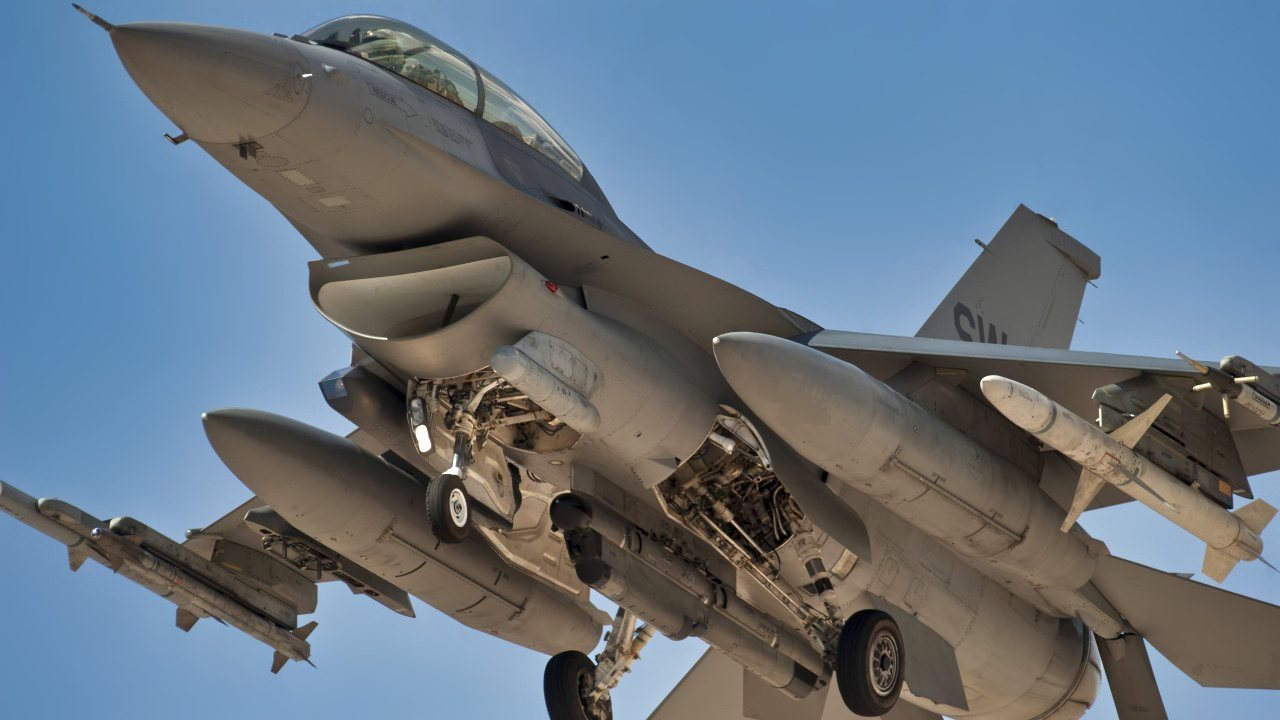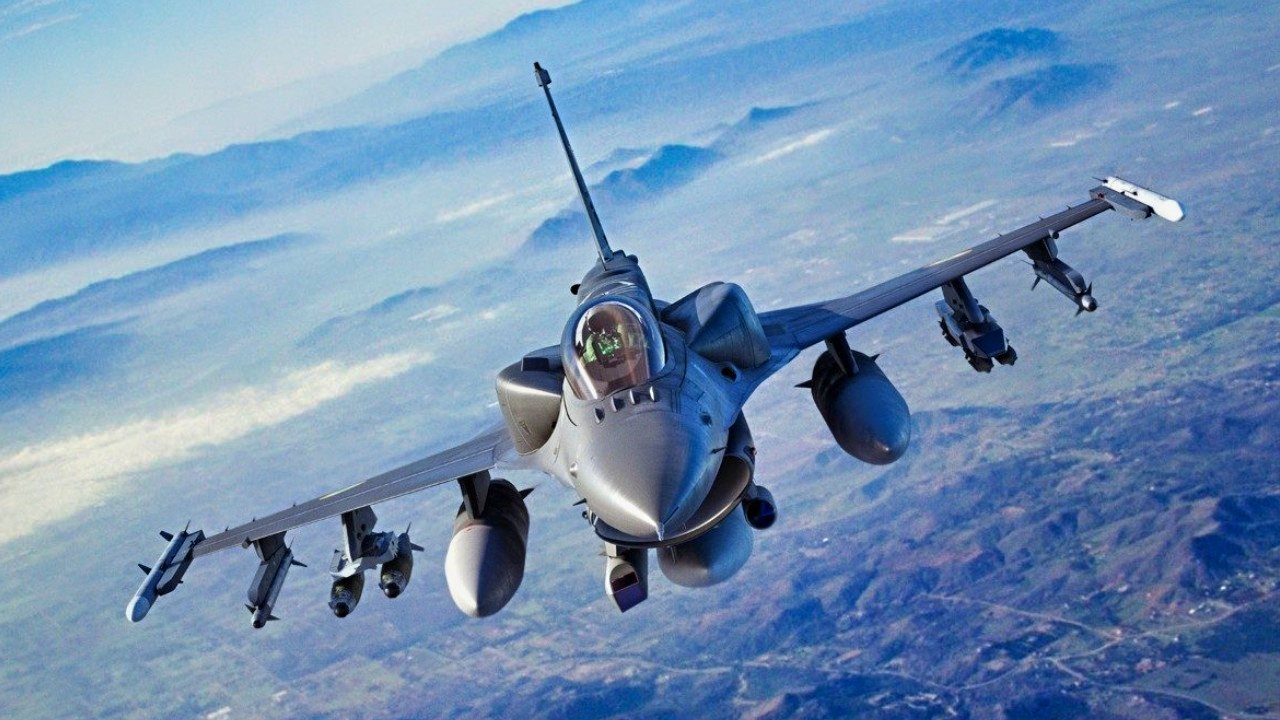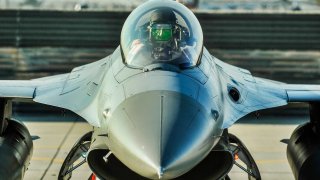The Air Force's Unstoppable F-16 Fighter Jet
The F-16 Fighting Falcon, a cornerstone of U.S. Air Force capabilities since its introduction in 1979, has evolved from a supporting air superiority fighter to a versatile multi-role fighter.
Summary: The F-16 Fighting Falcon, a cornerstone of U.S. Air Force capabilities since its introduction in 1979, has evolved from a supporting air superiority fighter to a versatile multi-role fighter. Designed to complement the heavier F-15 Eagle, the F-16 has proven its adaptability and effectiveness in various combat roles, notably during Operation Desert Storm.
-With a range of approximately 2,425 miles and the ability to carry a significant payload, including bombs and missiles, the F-16 has been a reliable asset for the U.S. military.
-Despite its aging technology, there are plans to convert some F-16s into unmanned systems, potentially extending their operational life and adapting to modern warfare demands where unmanned systems play an increasingly prominent role.
F-16 Fighting Falcon: Transition from Manned Fighter to Unmanned Future
The F-16 Fighting Falcon is another great fourth-generation multirole fighter designed for the U.S. Air Force. (The U.S. Navy operates a version of this bird for training purposes as well.) The F-16 first flew in December 1976 and was delivered to the Air Force three years later, in 1979.
The F-16 was designed as a supporting air superiority fighter lighter than its sister plane, the F-15 Eagle. Over time, however, the Air Force kept adding mission requirements to it – so much so that today it is no longer considered only an air superiority fighter, but instead is seen as a multi-role fighter.
The closest analogue to the relationship between the F-15 and F-16 as that relationship was initially conceived would be the original concept of the F-35 Lightning II in relation to the F-22 Raptor. The F-22 was an air superiority fighter that would effectively protect the F-35 from attack while the F-35 bombed targets below.
Of course, things have changed due to politics and economics. But, just as with the F-35 and F-22, the F-16 was designed to augment and assist the F-15 on its missions.
The Beauty of the F-16
What makes the F-16 so special, on top of its lighter-weight configuration, is that it can locate targets in all weather conditions. The F-16 can also detect low-flying aircraft in radar ground clutter, meaning it can better defend itself and surprise any opponents that might be trying to fly low to evade detection.
An F-16 performing a bombing run can fly more than 500 miles, deliver its ordnance package over the target, potentially dogfight other warplanes, and return to base.
There are a multitude of variants of this plane. Each subclass of F-16 has a slightly different Pratt & Whitney engine and one General Electric engine. The maximum thrust for the bird is about 27,000 pounds. The F-16 can cruise comfortably at around 1,500 miles per hour, or Mach 2. Its range is about 2,425 miles.
The F-16’s first major combat role came during Operation Desert Storm. F-16s flew the bulk of the sorties during that campaign, and they lived up to their multirole purpose. An F-16 on mission might attack Iraqi military airfields, production facilities, SCUD missile sites, and a variety of other targets. With each mission, the F-16 proved its worth.

Despite its description as being lighter than the F-15, the F-16 can pack quite a wallop. Payload can include two 2,000-pound bombs, two AIM-9 missiles, two AIM-120 missiles, and two 2,400-pound external fuel tanks. In terms of armaments, these birds are equipped with one M-61A1 20 mm multibarrel cannon with 500 rounds.
The F-16 is armed with external stations that can carry up to six air-to-air missiles. The fighters can carry conventional air-to-air and air-to-surface munitions. Lastly, the F-16 has an impressive suite of electronic countermeasures that help the plane survive when in combat.
The F-16 Gets a New Lease on Life
After 40 years of stellar service, the F-16’s lifespan is coming to a close. Technology and the capabilities of America’s adversaries have caught up or even surpassed the abilities of the F-16. When I was recently at an Air Force base, many of the pilots told me they were transitioning from the F-16 to the F-35 as the Falcons are systematically retired over the next few years.
The one enhancement that might keep it fighting for the next couple of decades would be to fully automate the F-16. Basically, turn it into a drone. Indeed, as Congress has balked over the last year at the rate of F-16s being retired with no replacement on hand, the Air Force has started to prepare some F-16s for conversion into unmanned systems.

In fact, in the next year, Secretary of the Air Force Frank Kendall is slated to fly aboard one of these pilotless F-16s.
Thus, the story of the magnificent F-16 might not yet be over.
As warfare increasingly becomes an unmanned affair waged across vast distances, the F-16 might be the newest addition to America’s growing arsenal of unmanned vehicles.
About the Author
Brandon J. Weichert, a National Interest national security analyst, is a former Congressional staffer and geopolitical analyst who is a contributor at The Washington Times, the Asia Times, and The-Pipeline. He is the author of Winning Space: How America Remains a Superpower, Biohacked: China’s Race to Control Life, and The Shadow War: Iran’s Quest for Supremacy. His next book, A Disaster of Our Own Making: How the West Lost Ukraine, is due October 22 from Encounter Books. Weichert can be followed via Twitter @WeTheBrandon.
All images are from the U.S. Air Force.


